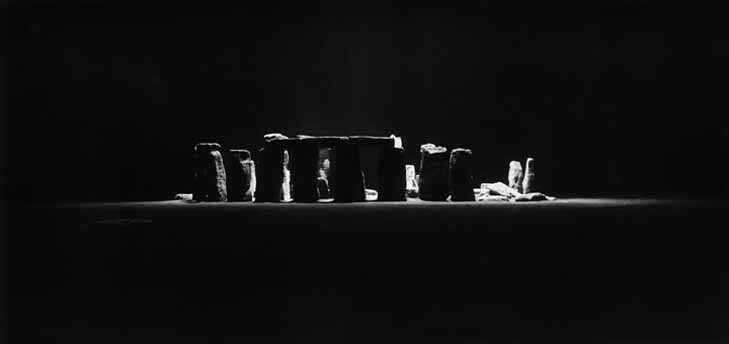 [Image: "Stonehenge at Night" (1944) by Harold Edgerton].
[Image: "Stonehenge at Night" (1944) by Harold Edgerton].
In 1944, Harold Edgerton, one of the forefathers of stroboscopic photography, produced an extraordinary image of Stonehenge. According to the authors of Stopping Time, that image was commissioned specifically as part of a larger military/optical experiment:
- Illuminated by a 50,000 watt-second flash in the bay of a night-flying airplane 1500 feet above the ancient monoliths, Edgerton's pictures of Stonehenge served as a demonstration to the Allied commanders of the potential for nighttime reconaissance photography. Edgerton was on the ground with a folding pocket camera braced on a fence post as the plane flew overhead. Simultaneously, the monument was recorded in perfect detail by a camera in the plane. The target was chosen because it was remote enough to allow the equipment to be tested without arousing unwanted interest.
But the idea of a stroboscopic light-bay opening up in the base of an aircraft and illuminating scenes of human prehistory from above is breathtaking—as if dropping illuminative ordnance into a world of darkness, far below. Indeed, as a photographic technique, pinpoint-flashes of high-powered aerial lighting would also be something well worth exploring in other archaeo-architectural contexts, from Angkor Wat to the Spiro Mounds. Light-bomb archaeology.
(Thanks, Nat!)